"Slave Wars." The uprising led by Spartak (part three).
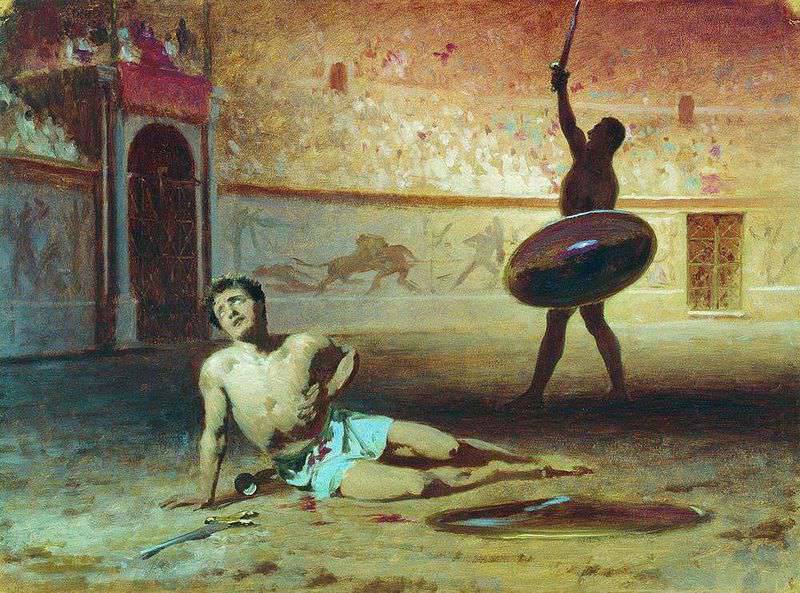
"The dying gladiator" F.A. Yuronnikov (1856).
And there are several such legends, and in all there is a kind of native tribe that grew out of dragon's teeth. According to legend, this tribe lived in the north of Greece and fought with Cadmus, who tried to seize their land. This legend was transmitted by such historians as Pausanias and Ammianus Marcellinus, and the Greek historian Thucydides even reported on the existence of a city in Macedonia, called Spartol, on the Chalkidike peninsula. Stephen of Byzantine also called a city like Spartakos in Thrace, just in the homeland of Spartacus. So, we can assume that under this tale of Sparta hides some real historical fact. It was possible that the people of Sparta existed (not to be confused with the Spartans), and that such cities as Spartol and Spartakos were associated with its self-name, and that Spartak itself received its name (or nickname?) In honor of the city or the people.
Reconstruction of gladiator duel in Nimes.
Now a little about how Spartacus, originally from Thrace, turned out to be in Rome? The historian Appian in his "Civil Wars" writes about it like this: "Spartak fought with the Romans, but then fell into captivity with them."
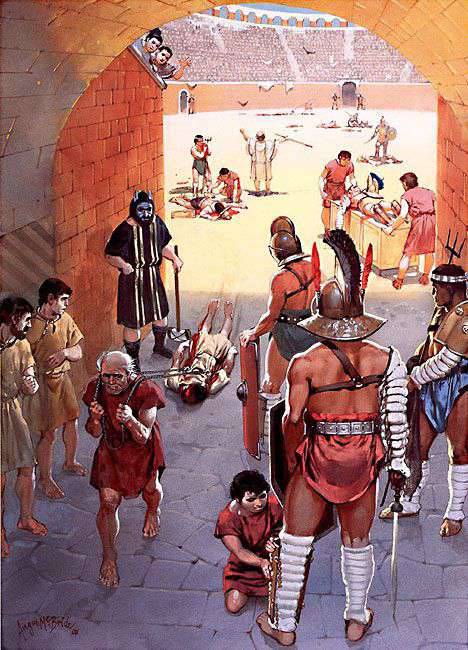
"Roman gladiators." Fig. Angus McBride
And they immediately sold him into slavery, and that's how he got to Rome, where, for the extraordinary power, Spartacus was sent to the school of gladiators in Capua. Note that the slaves in Rome were used not only as cheap labor, but they also recruited gladiators from the “people of the sword” who fought first for funeral ritual at a funeral, and then simply for the amusement of the Roman public, who traditionally wanted “bread and circuses. " According to legend, their Romans borrowed all from the same Etruscans. For the first time such a battle was organized in 264 BC. er Noble Romans Mark and Decius Brutus after the ceremonial funeral of his father. Well, and then they began to arrange more and more. Initially, only a few pairs of gladiators fought. In 216, 22 pairs were fought, in 200 - 25, in 183 - 60 pairs, but Julius Caesar decided to overshadow all his predecessors and organized a fight in which gladiator pairs of 320 took part. The Romans were very fond of gladiator fights, especially in those cases if they skillfully and bravely fought and killed each other "beautifully." Announcements of the performances of the gladiators were painted on the walls of houses and even on gravestones. So even such tombstones appeared that contained short appeals to such “advertisers” with a request not to write on this tombstone reports about the shows.
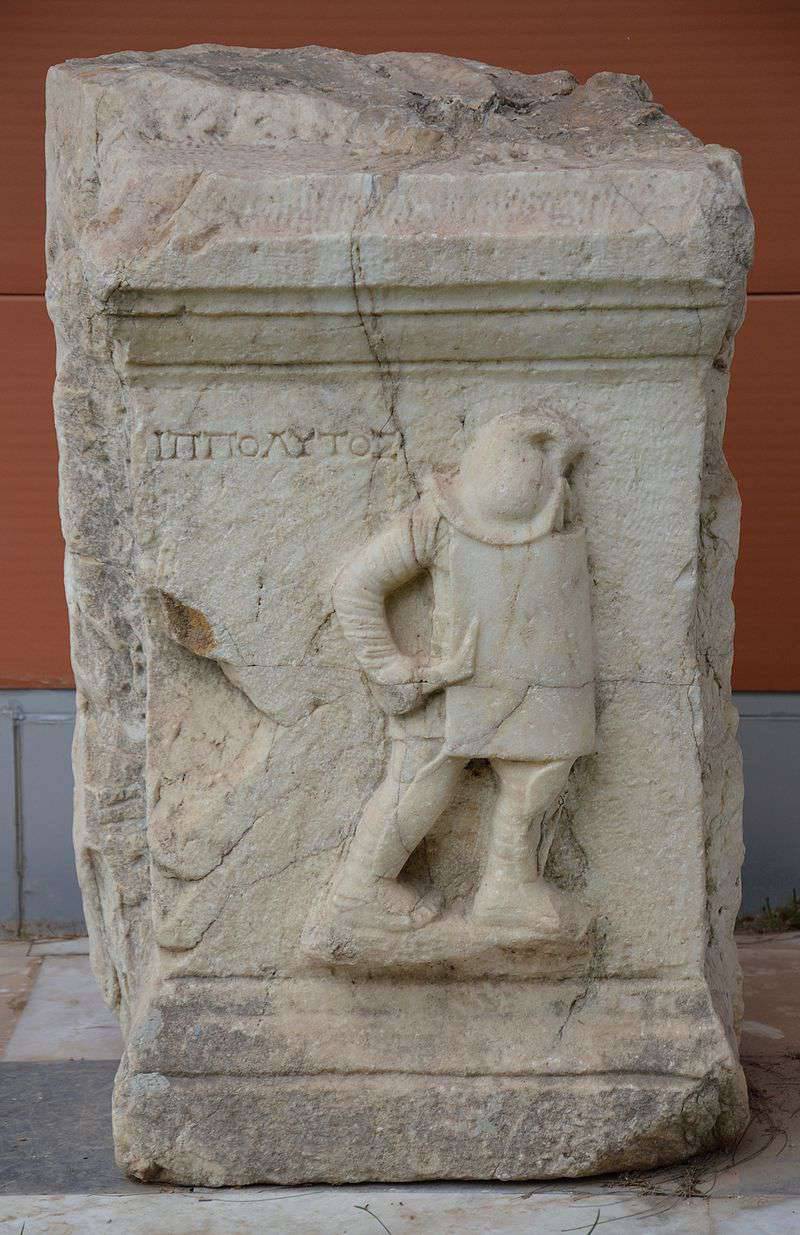
The gravestone monument to the gladiator discovered in Ephesus. Ephesus Museum. Turkey.
In a large number of advertisements about the battles in the circus found in the ancient Pompeii. Here is one of these announcements: “Gladiators of Edyla A. Svettia Ceria will fight in Pompeii on May 31. There will be a battle of beasts and a canopy. ” The public could be promised a "watering" arena to reduce dust and heat. In addition to the fact that the Romans "just looked" at the gladiator fights, they also made bets on them, that is, the tote already existed then. And some of them earned good money, so it was not only “interesting”, but also very profitable!
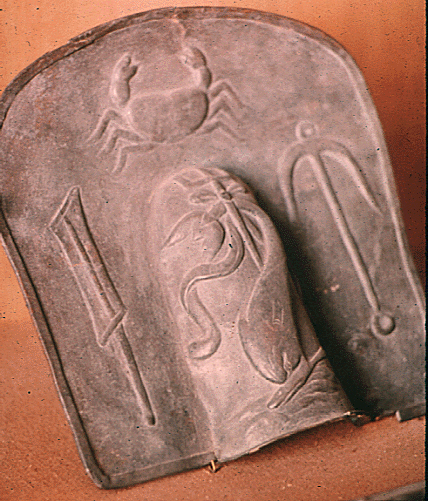
Gladiator's Shoulderguard of Pompeii. British museum. London.
The school owner was Lentul Batiat, and the conditions there were very difficult, but Spartak had good military training and in the gladiator school he learned everything that was required of the gladiator. And then, on one dark night, he and his comrades escaped and took refuge on Mount Vesuvius. At the same time, Spartacus immediately turned out to have two loyal assistants, Kriks and Enomay, with whom he made a small detachment and engaged in the fact that he began to raid the estates of slave-owners and free the slaves belonging to them. Appian says that his army consisted of runaway gladiators, slaves, and even "free citizens from Italian fields." Flor, author of the second century, reports that Spartak had a total of up to 10 thousands of people, and the whole Campaign was now in danger from them. Weapon they got from the detachment, which carried military equipment for one of the gladiator schools. So at least some of the soldiers in Spartak were equipped, albeit somewhat specific, but with quite high-quality and modern weapons of the time, but they could do something themselves.
Colchester Vase, c.175 AD Colchester Castle Museum, England.
The image of the fighting gladiators on the Kolchester vase close-up. As you can see, the gladiator-retiarium has lost his trident and net, and is now in full power of the murmillon, who attacks him with a sword. All the details of their equipment, and even the swastika on the murmillon's shield, are very clearly visible.
The first commander, who was led against Spartacus at the head of a three-thousand-strong detachment, Plutarch calls Praetor Praetor; Flor informs about a certain Claudia Glabra, other names are also called. In general, who started first is unknown, and it is clear why. Great Rome simply considered it inferior to pay much attention to some rebellious slaves. A detachment of Claudius, equal to three-quarters of the number of the legion - this was already serious. Although ... they were not legionnaires, but something like a militia. Moreover, it is noted that Claudius acted boldly and decisively, and soon surrounded Spartacus on the summit of Vesuvius. Spartak, however, managed to get out of this trap: slaves wove ladders from wild grape vines and descended from the mountain at night where no one expected it, and then unexpectedly attacked the Romans from the rear. Only one of the slaves broke down and crashed during the descent. Claudius was utterly defeated, and then the same fate befell the two quaestors of the commander, Publius Varinius, and he himself was nearly captured.
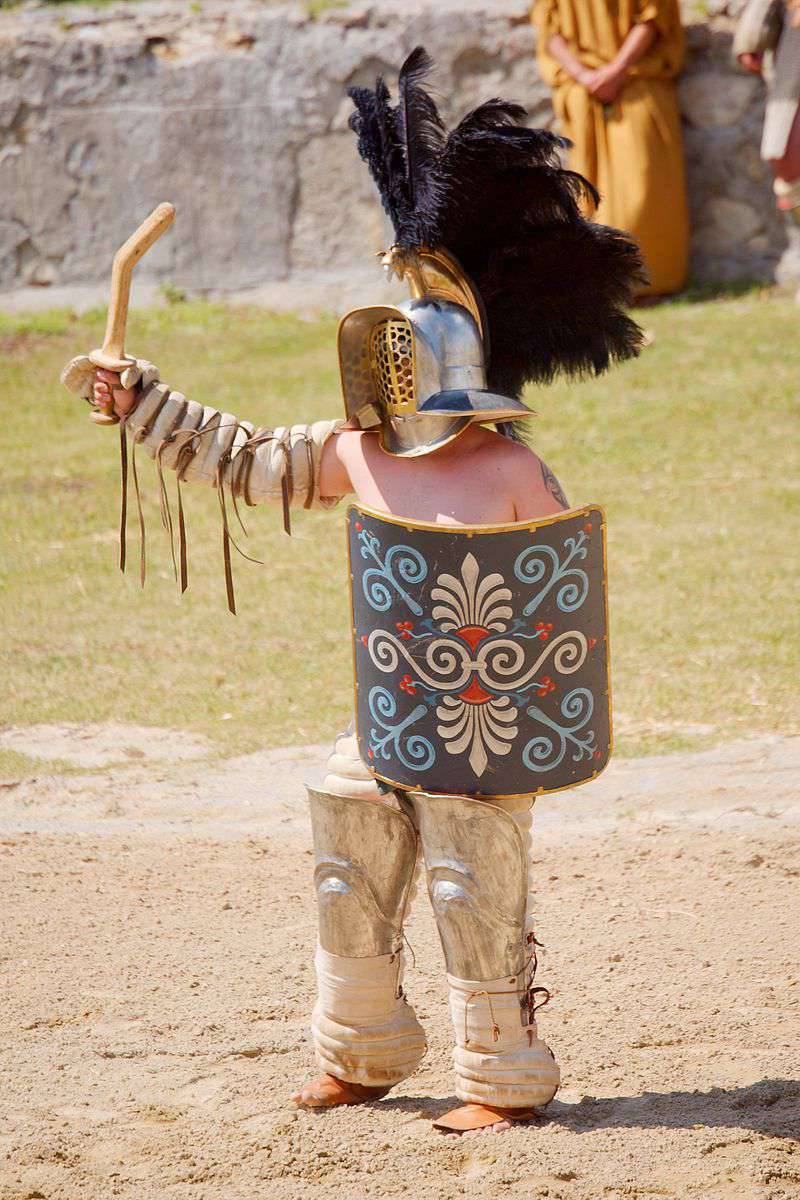
Gladiator-Thracian. Modern reconstruction. Park Carnunte. Austria.
The Gladiator-Thracian fights with the gladiator Murmillon. Park Carnunte. Austria.
Many Roman historians mention the descent of the stairs from the vine, so that he apparently did have a place, and the courage of the slaves and the military talent of Spartacus made a strong impression on his contemporaries. The historian Sallustiy notes that after this the Roman troops did not want to fight with Spartacus. And Appian does say that among the legionnaires there were even defectors in the army of Spartacus. Although Spartacus was cautious and did not take everyone into his army. As a result, Rome was forced to send both consuls against him. And both of them were broken! Interestingly, Spartak tried to prevent violence from its soldiers over the civilian population and even ordered to worthily bury the Roman matron who had been subjected to violence and committed suicide with himself. Moreover, her funeral was marked by a grandiose gladiatorial battle with the participation of 400 prisoners of war, organized by Spartak, which at the time of history turned out to be the most massive, since no one had exhibited at the same time 200 pairs of gladiators. So its members could be “proud” ...
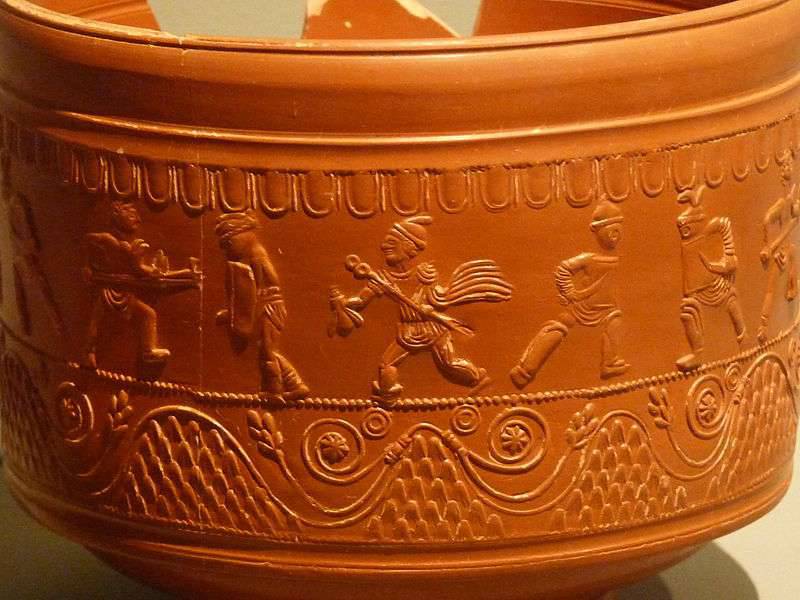
Ceramic vessel with gladiators from the museum in Zaragoza.
Interestingly, Spartak immediately after the victory over Clodius reorganized his “army” according to the Roman model: he started cavalry and divided the warriors into heavily and lightly armed. Since there were blacksmiths among the slaves, the manufacture of weapons and armor, in particular shields, was begun. It would be very interesting to imagine what kind of weapon the army of slaves armed themselves, besides the trophy and gladiatorial ones. There is no doubt that if slaves were dressed in armor, then they should have been simplified as much as possible.
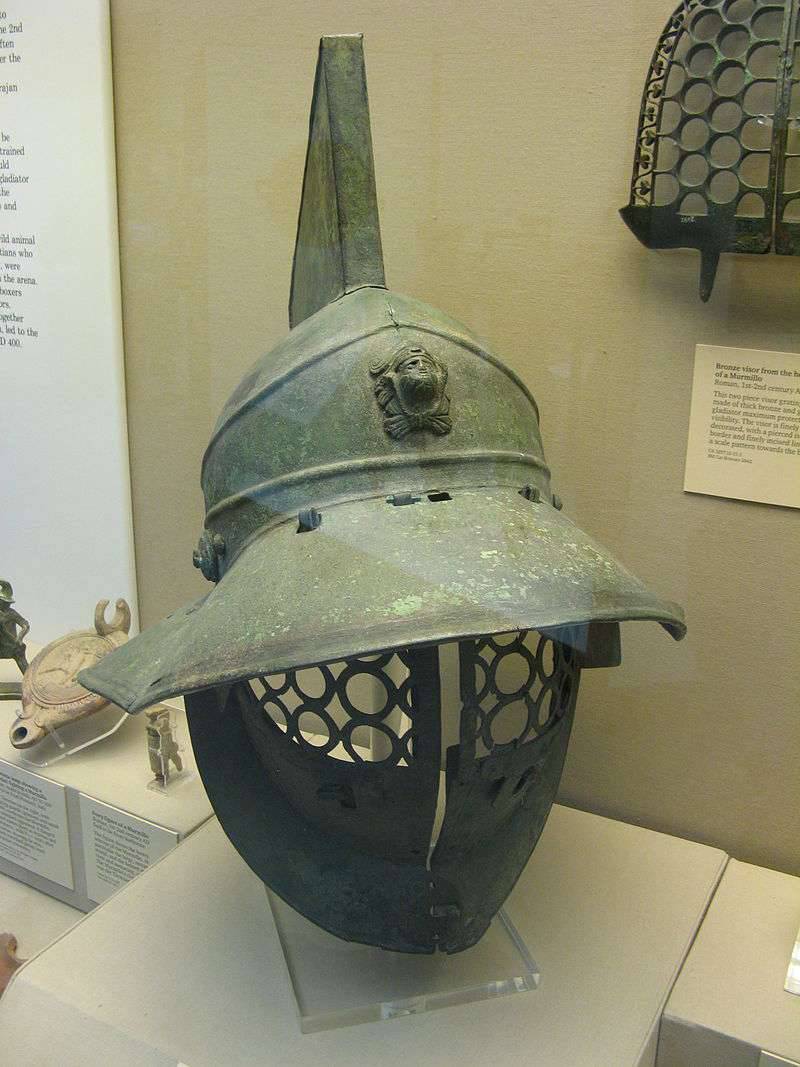
Gladiator helmet from the British Museum.
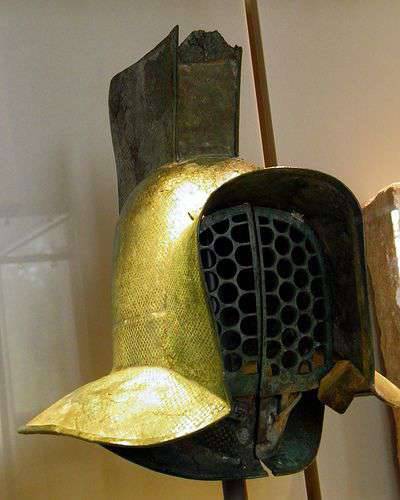
Bronze helmet of the gladiator-murmillon. "New Museum", Berlin.
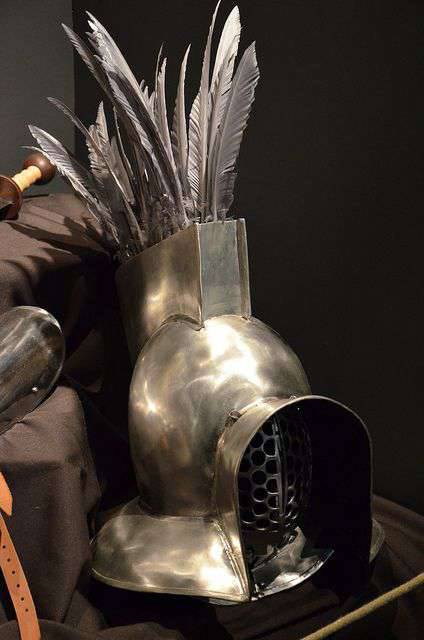
"Helmet with feathers." Reconstruction. Calkrais Museum and Park. Germany.
For example, helmets could have the appearance of a simple hemisphere with two peaks. Torso armor (if slaves made them) could be two anthropomorphic plates on the chest and on the back, tied on the sides with straps, and connected from above by means of semicircular shoulder pads with ties on the back and chest. Chainmail could be used, but only captured. It is possible that skin shells were made from leather, again, like the Greek thoraxes. Shields could be round, wicker and rectangular - also wicker, as well as glued from shingles and also covered with leather. So it would be easier and more reliable! Actually, gladiator equipment was too specific and, perhaps, was altered somewhat. For example, the helmets of the gladiators were too closed, which is inconvenient in real combat, moreover, they could not hear anything. It is unlikely that the Thracians were used. In such leggings it is inconvenient to run.
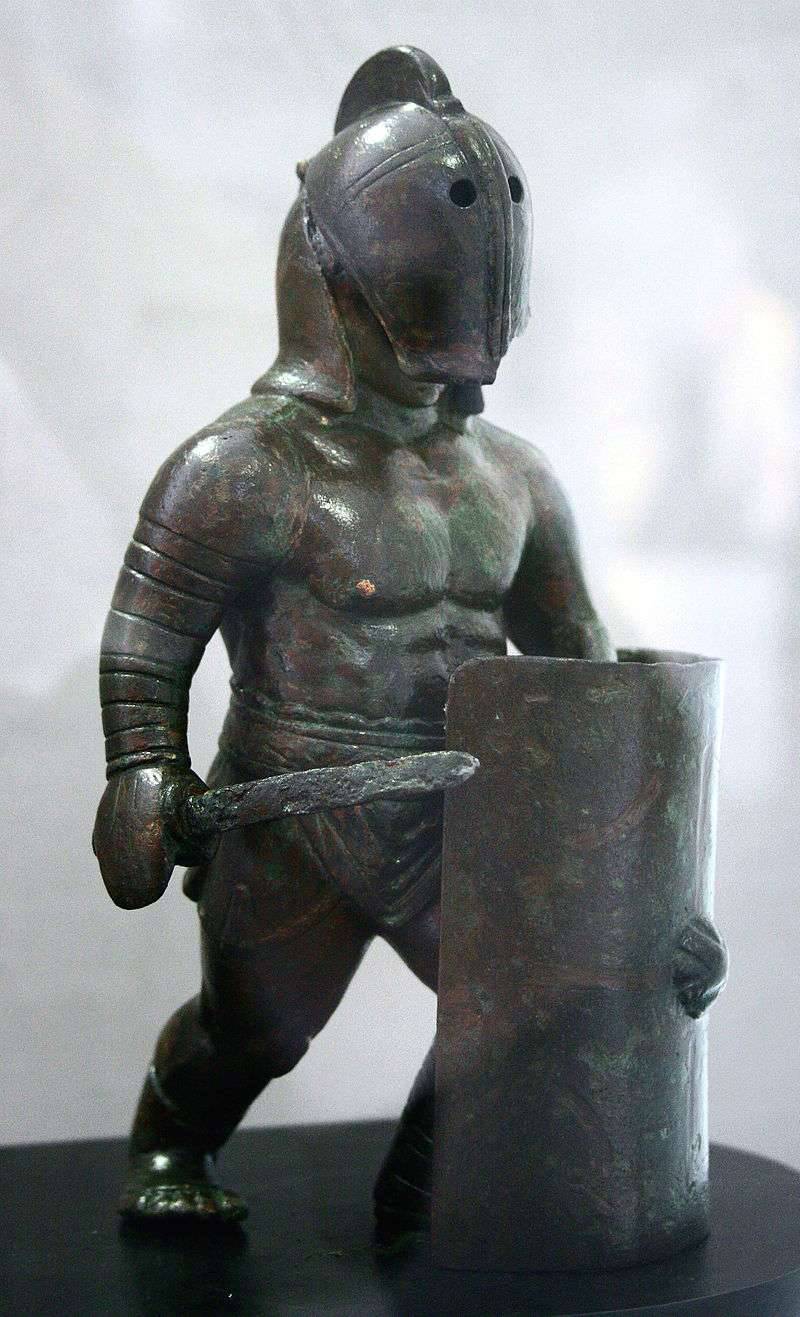
The figure of the gladiator-samnita from the museum in Arles. France.
But further, as it always happens between people, Spartak and Kriks began to disagree. Spartak offered to go to the Alps and, crossing them, return the slaves to their homeland. Criks also demanded a march on Rome and the destruction of all Roman slave-owners as such. Since the number of rebels reached 120 thousands of people, it was necessary to decide on either one or the other. As a result, Kriks with a detachment of Germans separated from the troops of Spartacus, who went north, and remained in the south, where he was defeated by the consul Lucius Gellius at the Garganskaya mountain. Spartacus, meanwhile, passed Rome and moved to the Alps. Enomay (exactly how he died, unknown) also separated from the main forces and was also defeated.
Gladiator equit. Modern reconstruction. Park Carnunte. Austria.
Gladiators provokers. Park Carnunte. Austria.
However, Spartacus again went south again and agreed with the Cilician pirates to transport his army to Sicily. However, they deceived him, and then the slaves, as Sallust describes, began to build rafts in order to force the narrow Messenian Strait. However, in this they were not lucky. A storm broke out and carried the rafts into the sea. Meanwhile, it turned out that the slave army was blocked by the Romans under the command of Marc Licinius Crassus. By the way, he began by exposing his troops, so far losing a series of battles to the slaves, decimations - that is, the execution of every tenth by lot. In total, according to Appian, 4000 people were executed in this way, which greatly enhanced the spirit of the legionnaires. They dug a deep ditch, more than 55 kilometers in length, across the Regian Peninsula, where the army of Spartak was, and reinforced it with ramparts and a palisade. But the slaves managed to break through these fortifications: the ditch was filled with trees, brushwood and the bodies of prisoners, and horse carcasses; and defeated the units of Crassus. Now Spartak headed for Brundisium, a major seaport, in order to take slaves to Greece through it, since it was very close to Brundysia and it was possible to do so. But ... it turned out that he could not take the city. In addition, two detachments broke away from Spartacus — Gannik and Casta — and were defeated by the Romans, and, in addition, they landed with the help of Gnea Pompey in Italy to help Crassus.
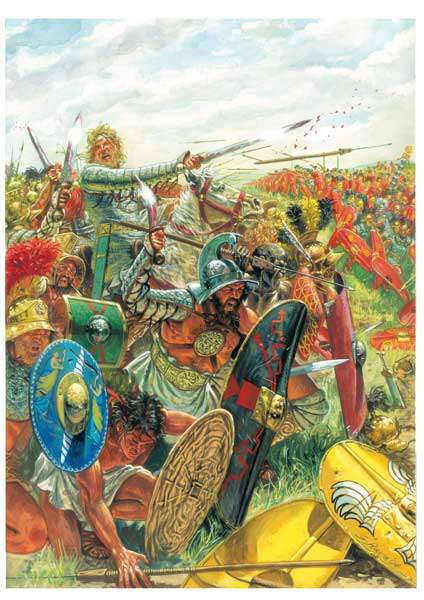
Spartak in battle. As you can see, many of the battling slaves are depicted in reconstructed defensive armaments and with improvised wicker shields. Fig. J. Rav.
Under these conditions, Spartak was forced to join the decisive battle with Crassus, in which he himself died (his body was never found), and his army suffered a crushing defeat. Captive slaves were crucified along the road from Capua to Rome on the crosses. Then both Crassus and Pompey still for some time finished off the remnants of the army of Spartacus in the South of Italy, so that the uprising, one might say, continued for some time after the death of Spartacus himself. There are several heroic descriptions of his death, but how it all happened, nobody knows for sure.
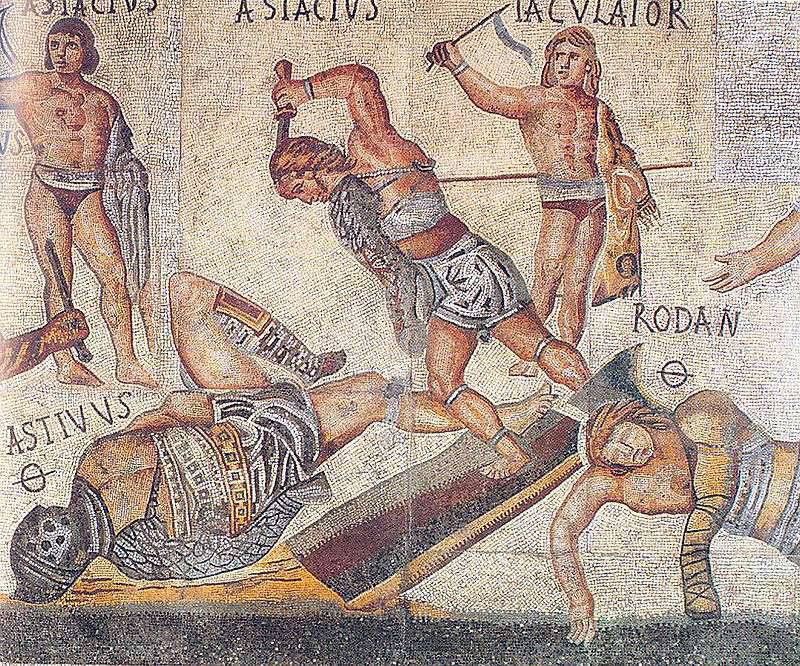
Gladiatorial fight: retiariy against the secant. Mosaic from Villa Borghese. Rome.
There is an image on the wall of a house in Pompeii, depicting the moment when an equestrian Roman warrior wounds Spartacus in the thigh. In the book of the famous Soviet historian A.V. Mishulin on page 100 is a reconstruction of this event. However, she can hardly be trusted, given the fact that the Roman horsemen used throwing spears, not shock! Interestingly, he also has another image of this moment on the screen saver on the 93 page.
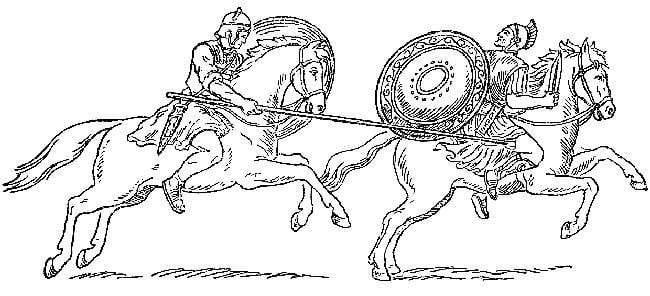
Felix of Pompeii injures Spartacus in the thigh. (See p. 100. AV Mishulin. Spartak. M .: 1950 g.)
Also an image, more realistic, given our knowledge of the Roman army of this period. (See p. 93. AV Mishulin. Spartak. M .: 1950 g.)
And here it is much more reliable and appropriate. However, if we believe him, then we will have to admit that the Roman rider somehow ended up in battle behind Spartacus, and this does not quite fit with the descriptions of the last battle of the leader of the army of slaves. Whatever it was, but this fresco with the words "Spartacus" is his only image! Over the head of the second rider there is an inscription: "Felix of Pompeii", although she understands with difficulty. It is interesting that it was made in the ancient Okox language, and then this mural was once again covered with plaster in the times of the Empire, and opened only in 1927 year. From this we can conclude that this drawing was made by Felix himself (or by someone on his order) in memory of the perpetuation of such a significant event as was his victory over such a glorified and dangerous opponent! By the way, Plutarch reports that Spartak was accompanied by his wife, a Thracian, who had the gift of divination and a fan of the cult of the god Dionysus. But where and when he managed to get hold of her is unknown, and then other historians do not mention its existence.
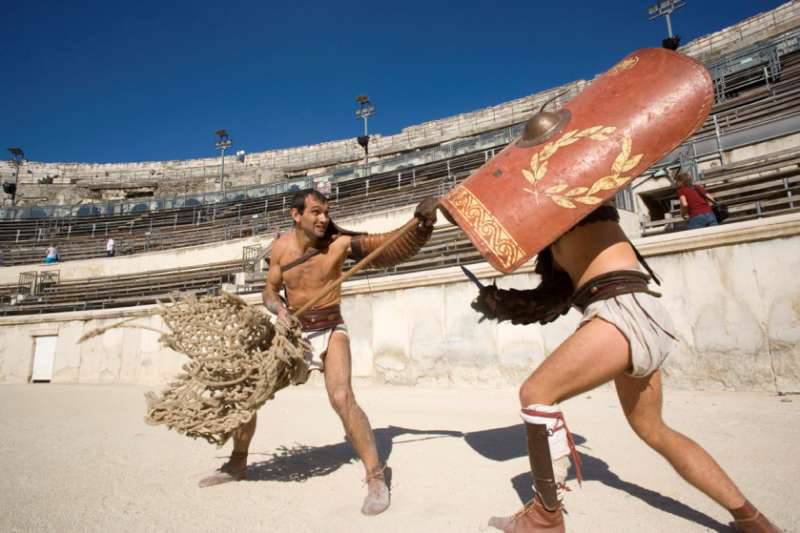
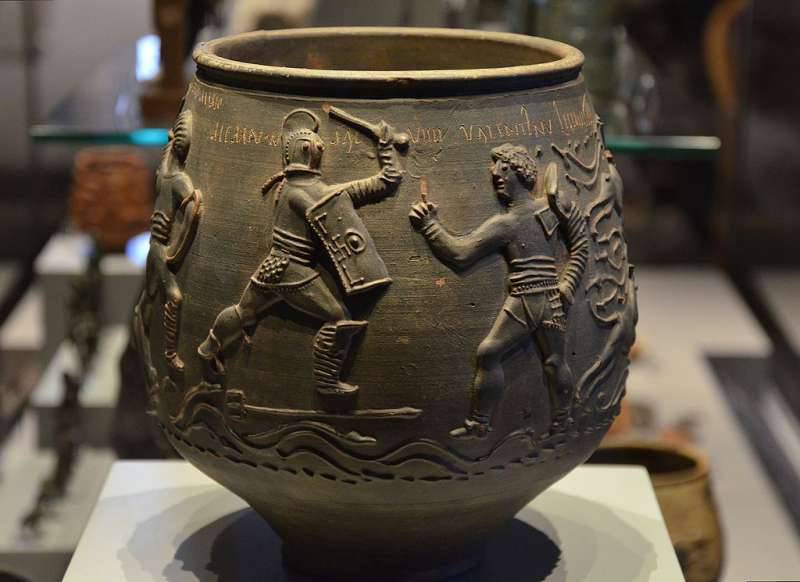
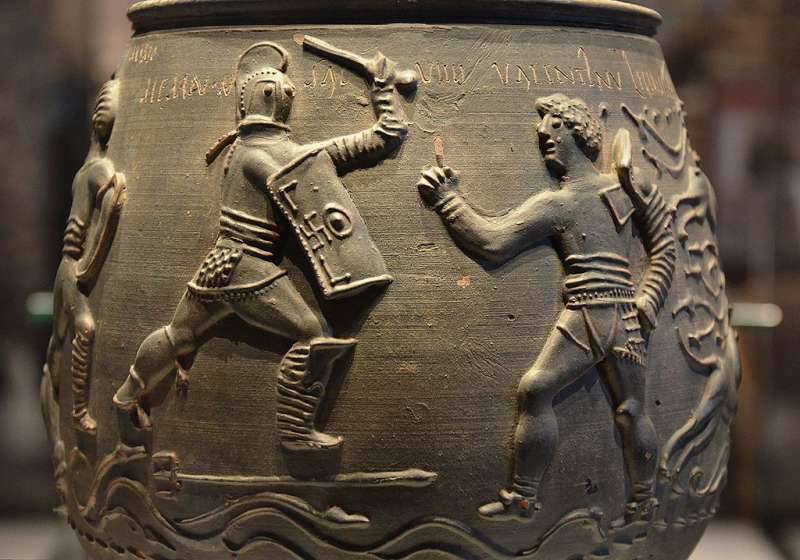
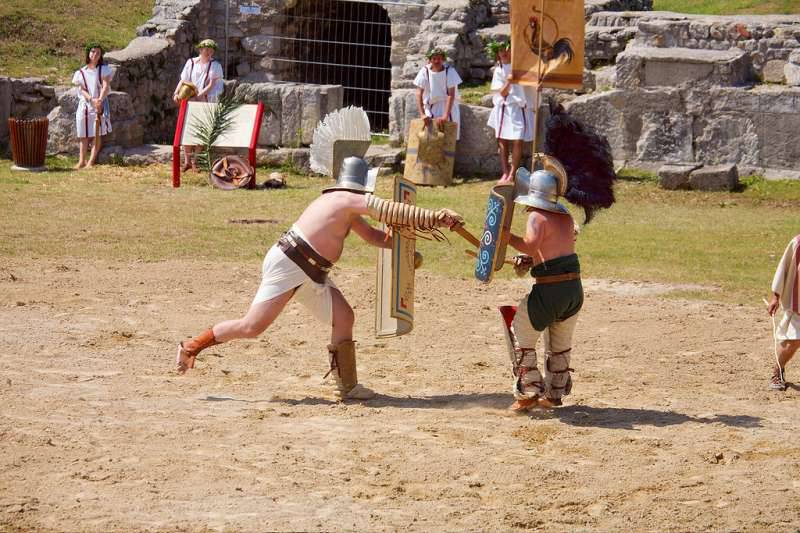
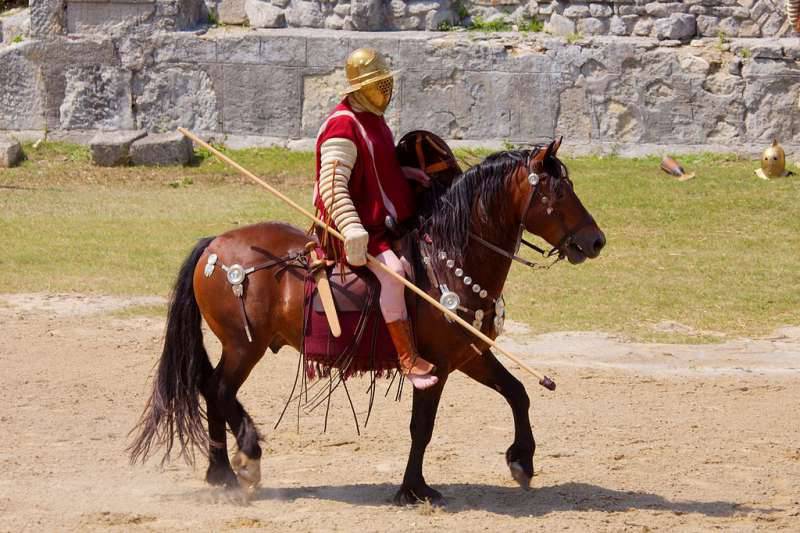
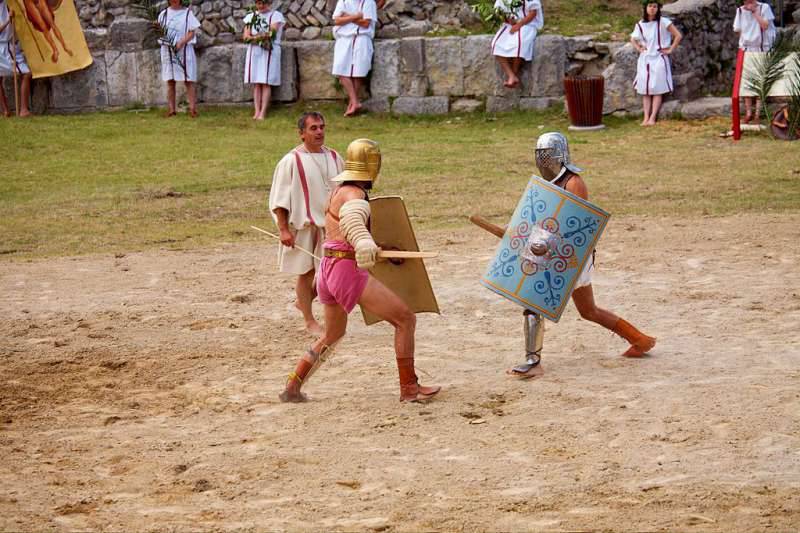
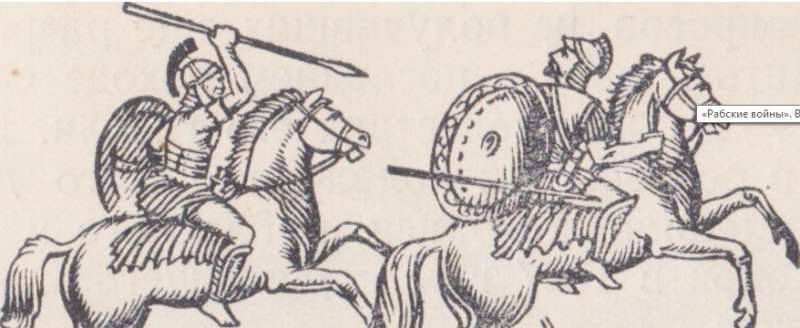
Information